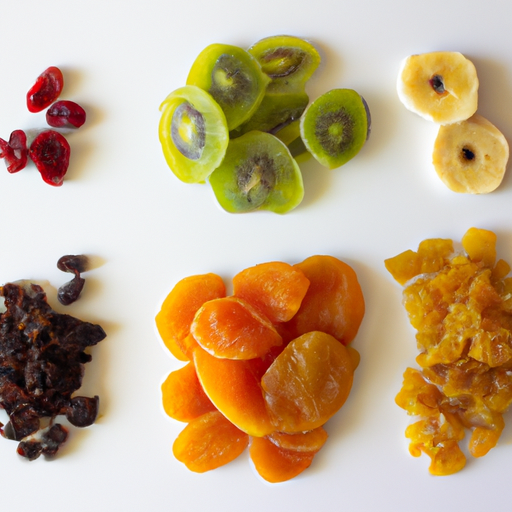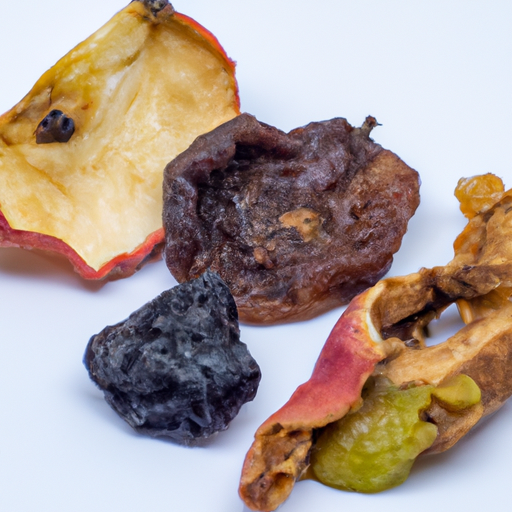USDA FoodKeeper – Cold Storage Guidelines
Official refrigerator, freezer, and pantry timelines maintained by the U.S. Department of Agriculture.
Visit USDA FoodKeeperA colorful blend of chewy, sweet, and tangy delights, dried mixed fruit not only satisfies your cravings but also packs a nutritional punch. Storing it in a cool, dry pantry can extend its shelf life to about six months, and even a month past its expiry date, it remains a tasty and safe snack option.
30 most common foods with instant answers. Print it and stick it on your fridge—completely free! Want more? Upgrade to the complete guide with 70+ foods.
"Dried fruits can be stored for up to a year in a cool, dry place, and for even longer in the refrigerator or freezer." - USDA


Pantry
50-70°F (10-21°C)
Store in airtight container with moisture absorber. Keep in cool dark place. Check regularly for signs of moisture or pests.
180 days
365 days
Mold presence, unusual odors, excessive hardness, moisture accumulation, discoloration, pest presence, rancid smell
Baking, trail mix, granola, hot cereal topping, tea infusions
Single variety dried fruits, fresh fruit, candied fruit
The expiration date on dried mixed fruit indicates the date until which the product is expected to remain safe to consume. However, dried fruit does not truly expire in the same way that fresh produce does. Instead, the expiration date is more about quality and flavor. Over time, dried fruit may lose its taste, texture, and nutritional value, but it is still safe to eat beyond the expiration date if stored properly. The best quality refers to the peak flavor and texture of the dried fruit, which may diminish over time but does not necessarily mean the product is unsafe to eat.
To determine if Dried Mixed Fruit has gone bad, look for any signs of mold, discoloration, or an off smell. The fruit should maintain its vibrant colors and natural appearance, without any slimy or mushy textures. If the fruit looks dull, has an unusual odor, or feels overly soft, it's best to discard it.
Dried mixed fruit, like any dried fruit, can pose a risk of foodborne illness if not stored properly. The main concern is the growth of mold, which can produce mycotoxins that are harmful when ingested. Additionally, if the dried fruit becomes moist or sticky, it may attract bacteria and other pathogens. To minimize these risks, it is crucial to store dried mixed fruit in a cool, dry place and ensure that it is properly sealed to prevent moisture from getting in.
To extend the shelf life of dried mixed fruit and maintain its quality, store it in an airtight container or resealable bag in a cool, dry place away from direct sunlight. You can also refrigerate dried fruit to help preserve its texture and flavor, especially in warmer climates. If your dried mixed fruit becomes too hard or dry, you can revive it by soaking it in warm water or fruit juice for a few minutes to rehydrate it. Just be sure to drain off any excess liquid before consuming or storing the fruit again.
Dried mixed fruit has been enjoyed for centuries across various cultures as a convenient and long-lasting snack. In many cultures, dried fruit is a symbol of prosperity and good luck, often included in special occasions and traditional ceremonies. Different regions have their own variations of dried mixed fruit, incorporating local fruits and flavors. For example, Mediterranean countries often include figs, apricots, and raisins in their mixed dried fruit blends.
Once opened, Dried Mixed Fruit can typically be consumed within 2-3 weeks if stored in an airtight container in the pantry. For extended freshness, consider transferring it to the refrigerator to prolong its shelf life.
If Dried Mixed Fruit has been at room temperature for a day, it should still be safe to eat if it appears and smells normal. However, for optimal quality, store it in a cool, dry place away from direct sunlight to maintain its flavor and texture.
The type of container used to store Dried Mixed Fruit can impact its shelf life. Opt for airtight containers to prevent moisture exposure and preserve freshness. Avoid storing in plastic bags, as they may not provide adequate protection against humidity.
It's advisable to avoid storing Dried Mixed Fruit next to fresh fruits due to the risk of cross-contamination. Fresh fruits emit ethylene gas, which can accelerate the ripening of dried fruits and potentially lead to spoilage. Keep them separated to maintain their quality.
Freezing Dried Mixed Fruit can alter its texture slightly upon thawing. While the flavor remains intact, the texture may become softer or slightly chewier. To minimize texture changes, seal the dried fruit in an airtight container before freezing and allow it to thaw at room temperature.
The shelf life of Dried Mixed Fruit may vary slightly among different brands based on factors such as packaging, moisture content, and preservatives used. Always refer to the expiration date on the package and follow storage instructions provided by the manufacturer for optimal freshness.
Cooking Dried Mixed Fruit can extend its shelf life by removing moisture and inhibiting microbial growth. When using dried fruit in recipes or cooking methods like baking, the heat treatment can increase its longevity compared to raw dried fruit. Store cooked dried fruit in a sealed container to maintain freshness.
Dried Mixed Fruit typically lasts longer in winter due to the cooler temperatures and lower humidity levels, which help preserve its quality. During summer, higher temperatures and humidity can accelerate spoilage, so it's essential to store dried fruit in a cool, dry place away from heat sources and direct sunlight.
When transporting Dried Mixed Fruit for an extended car journey, pack it in a sealed container or resealable bag to prevent exposure to air and moisture. Avoid placing the container in direct sunlight or near heat sources in the vehicle. Consider using a cooler bag with ice packs to maintain freshness during the trip.
30 most common foods with instant answers. Print it and stick it on your fridge—completely free! Want more? Upgrade to the complete guide with 70+ foods.
Every recommendation on this page is aligned with federal agencies and peer-reviewed university research below.
Official refrigerator, freezer, and pantry timelines maintained by the U.S. Department of Agriculture.
Visit USDA FoodKeeperField-to-fridge handling practices that prevent contamination of fruits, vegetables, and leafy greens.
Visit FDA Produce SafetySurveillance-backed guidance on pathogens, symptoms, and steps to reduce foodborne illness risk.
Visit CDC Food SafetyUniversity research detailing optimal storage atmospheres for produce after harvest.
Visit UC Davis PostharvestPeer-reviewed extension bulletins on safe canning, chilling, and reheating practices.
Visit Penn State ExtensionNeed deeper reading? Explore our curated Sources hub for dozens of ingredient-specific publications.
Scan your food directly and get instant safety info using our AI-powered camera feature.
We have recipes that can help you safely use dried mixed fruit past its expiration date!
View Recipes →Cooking Ingredients
View expiration date and storage guide →
Beverages
View expiration date and storage guide →
Grains & Pasta
View expiration date and storage guide →
Instant Foods
View expiration date and storage guide →
Condiments & Spices
View expiration date and storage guide →
Fruits & Vegetables
View expiration date and storage guide →
Baking Supplies
View expiration date and storage guide →
Condiments & Spices
View expiration date and storage guide →
Canned & Jarred Goods
View expiration date and storage guide →
Important: These are general guidelines based on authoritative sources listed above. Always use your best judgment and when in doubt, throw it out. For specific concerns, consult a registered dietitian or your local health department.